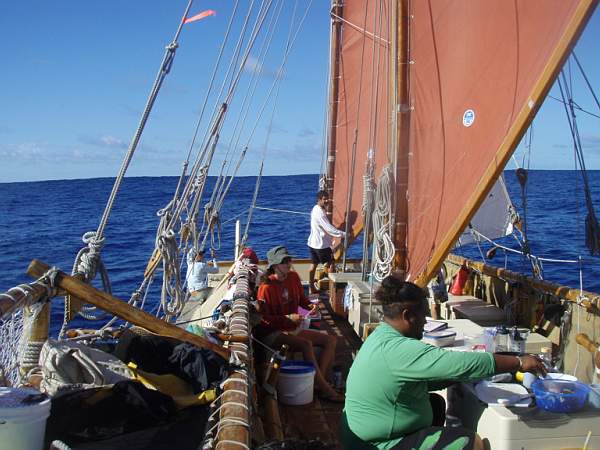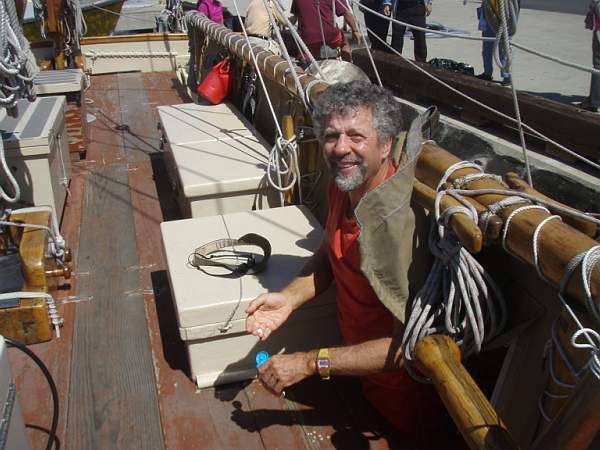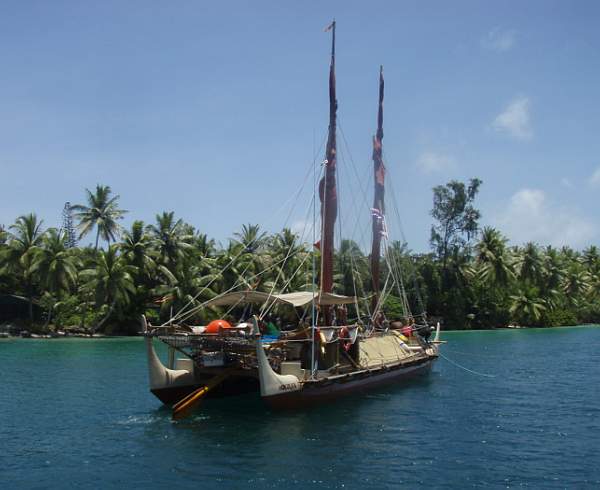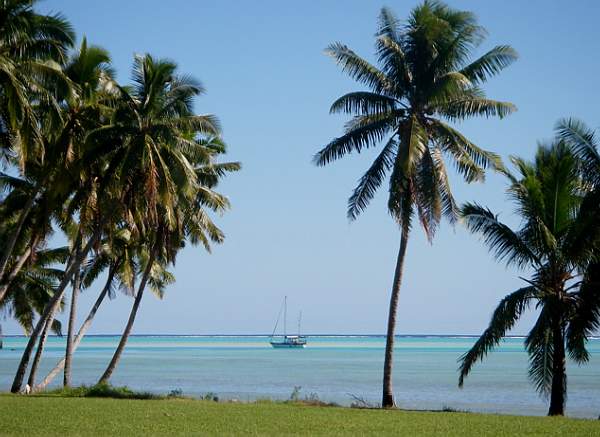Published in the Ocean Watch column, Honolulu Star-Advertiser © Susan Scott
March 20, 2009
I have a confession to make: I never paid much attention to the Hokule’a.
Members of the Polynesian Voyaging Society launched this model of an ancient sailing canoe in 1975, and by the time I moved to Hawaii in 1983, Hokule’a had already made three trips. At that time I didn’t know an atoll from an acre of corn, and those voyages didn’t mean much to me.
In addition, I didn’t know Pacific island groups. When in 1985-87 PVS voyagers sailed Hokule’a around the 16,000 mile Polynesian triangle, I got the drift but missed the details.
Aitutaki?
Where’s that? (Cook Islands.)
I also thought this canoe and her trips were Hawaiian-only affairs, and that meant not me.
That was wrong. About two weeks ago, when I stepped aboard Hokule’a for the first time while her captain and crew prepared for a voyage to Palmyra, I found a mix of races and ages that reflect Hawaii’s diversity. The culture sharing was so strong and the boat so awash with aloha that just standing around was a good time.
It was also exciting because after sailing to Palmyra, Tahiti and then across the South Pacific to Australia, I could now appreciate what they’re doing. And I was humbled.
When I set out for Palmyra in 2005, my 37-foot ketch had a compass, a single-sideband radio, radar, a satellite phone, two autopilots, a GPS map and two hand-held GPS receivers — and I still felt afraid when that last mountain peak disappeared below the horizon.

The Hokule’a’s voyagers have no such gear, yet off they go, using only the sky, ocean and wildlife to find the tiniest islands. And find them they do. Navigator Bruce Blankenfeld and crew reached Palmyra yesterday, and Hokule’a now rests safely at anchor in that atoll’s lagoon.
My admiration for Hokule’a’s sailors soared even higher when I saw the living quarters. I think of offshore sailing as roughing it — and my boat has a fridge, microwave oven, water maker, shower and waterproof cabins with pillows and cushions.
On Hokule’a each crew member has his or her own sleeping pad laid end to end inside the two hulls with only a canvas curtain separating bed from deck. Each bunk has room for one body and one small bag.
A lot of people wonder about toilet facilities on boats. (Women ask me about this often.) My boat’s head is similar to land bathrooms, except the toilet has a hand pump that flushes it with sea water. On Hokule’a the head is a hole over the water at the back of the boat.
“It’s got a curtain,” my husband said, unfazed.
Craig knew this because he’s a crew member on this voyage, and before they left for Palmyra, they made an overnight practice sail in strong tradewinds.
“How was it?” I asked him the next day.
“Good. Wet, though. Everything gets wet — deck, crew, bunks.”
“The bunks get wet?” I said.
He nodded and, being a seasoned sailor, shrugged it off. He did, however, buy a shower curtain for his bed.

This voyage to Palmyra is the first of several training trips to prepare navigators and crew members for Hokule’a’s future circumnavigation. The mission is to inspire people to take care of the land, the oceans and each other. Her message to me personally was loud and clear: We are all in this together.
 Hokule’a in Palmyra’s Lagoon
Hokule’a in Palmyra’s Lagoon
I am now paying close attention to Hokule’a and will forevermore. We are kindred spirits. We’ve sailed to Aitutaki.
 S.V. Honu anchored in Aitutaki
S.V. Honu anchored in Aitutaki